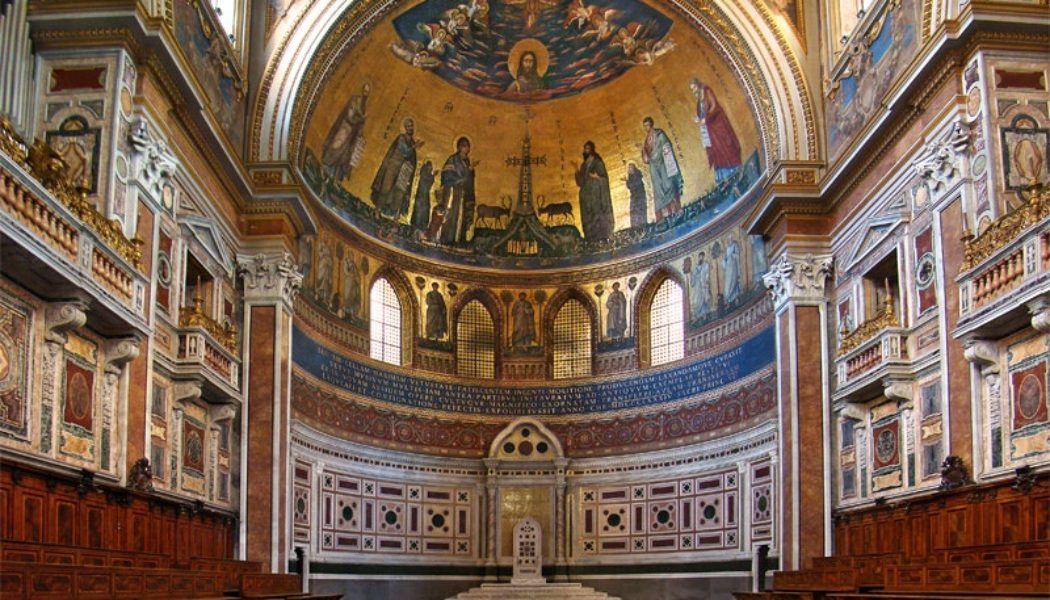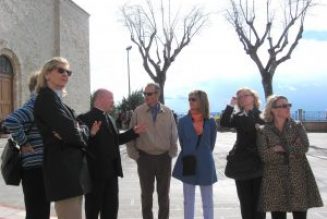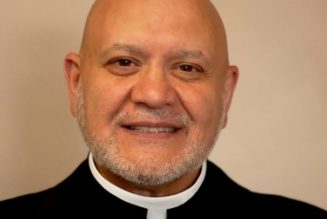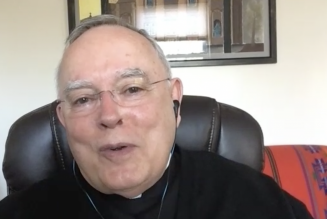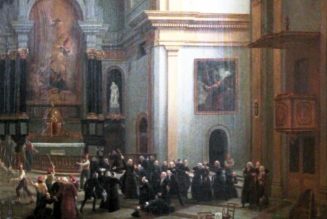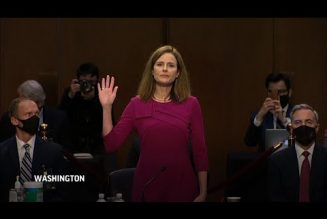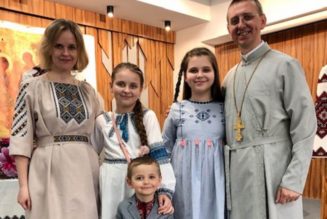Hey everybody,
Today the Church celebrates the Dedication of the Lateran Basilica — and this is The Tuesday Pillar Post.
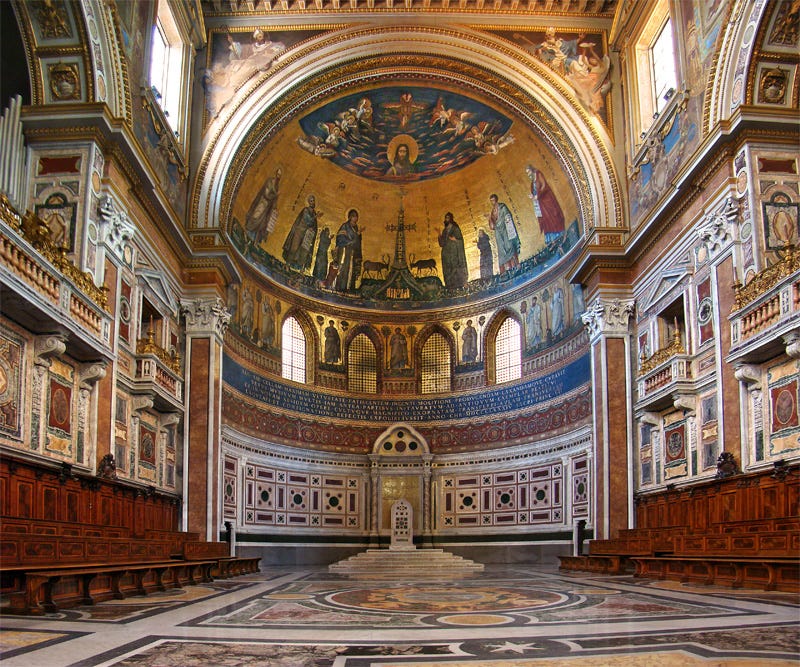
If you’re a convert to Catholicism, or if you didn’t grow up celebrating many liturgical feast days, it might seem a bit weird that the Church periodically celebrates these feasts like today, that are about buildings rather than saints. I’ll write about that a little later in the newsletter. But first…
The news
Why Catholics leave, and why they stay
In a series of special reports this week, we are publishing the inaugural results of The Pillar Survey on Religious Attitudes and Practices— a scientifically conducted poll of Catholics, “once-Catholics,” and non-Catholics, constituting a demographically representational sample of Americans — with an oversampling of Catholics, to give us clear and accurate information about how, and what, they think.
We asked questions about religious beliefs, identities, affiliations, and attitudes — in order to look at the changing religious make-up of the United States, but, most especially, so that we can understand more about the demographic, social, and cultural realities facing the Church now, and in the decades to come.
Our report yesterday offered an overview of the religious landscape in America.
Here are some insights:
Catholics who went to Mass weekly as children were far more likely to attend Mass as adults than people who did not. Thirty-eight percent of Catholic adults who were taken to Mass at least weekly as children continue going to weekly Mass as adults. Among Catholic adults who were not taken to Mass weekly as children, only 12% go to Mass as adults.
Parents feeling badly about not taking their children to daily Mass need not fret: There is not a significant difference in adult Mass attendance between those who were taken to Mass daily as children and those taken weekly.
Here’s another:
We asked our respondents “If at some point you ceased to attend religious services regularly (for a year or longer) why did you do so?”
The results we received were a mix of theological issues and practical ones. Of the top four, three are practical issues.
The most common reason, cited by 20% of people raised Catholic who stopped attending Mass for a year or more, was: “I moved away from the church I had been attending.”
The second-most common response is more theological: “I did not feel that attending church mattered.”
The next two most frequent reasons for ceasing to attend Mass for a time are practical: “I moved away from my family” or “I had a change in circumstances that made it harder to attend.”
Quarterbacked by The Pillar’s contributing editor Brendan Hodge, our survey asked practicing and non-practicing Catholics a lot of questions about their lives, their upbringing, and their beliefs. We look at how divorce, family prayer, Catholic schools and universities, and immigration impact the practice of the Catholic faith — and even more.
Guys, this survey is big. There is a lot the entire Church can learn from the survey analysis we’re reporting right now — which is why we’re taking an entire week to report it. Read today’s report, read yesterday’s, and get ready for even more surprising information coming down the pike this week.
And, by the way, there is no other Catholic news outlet doing this kind of research and analysis, anywhere. You can only get this kind of work at The Pillar. It’s fun to do, and — we believe — really important, but it’s not cheap, especially since we’re working with serious pollsters, for maximum accuracy. We depend on you. Seriously.
So, you know the drill. If you’re not already a paying subscriber, become one:
If you are a subscriber already, share this important — and fascinating — information with your friends:
Cutting Vatican losses
Well, it had to happen sometime. The Vatican’s Secretariat of State is under contract to sell its property in London; the building it bought in 2018 for 350 million euros will now sell for 233 million.
I am not an economist. But 233 million is less than 350 million — the entire London property boondoggle has cost the Secretariat of State more than 100 million euros.
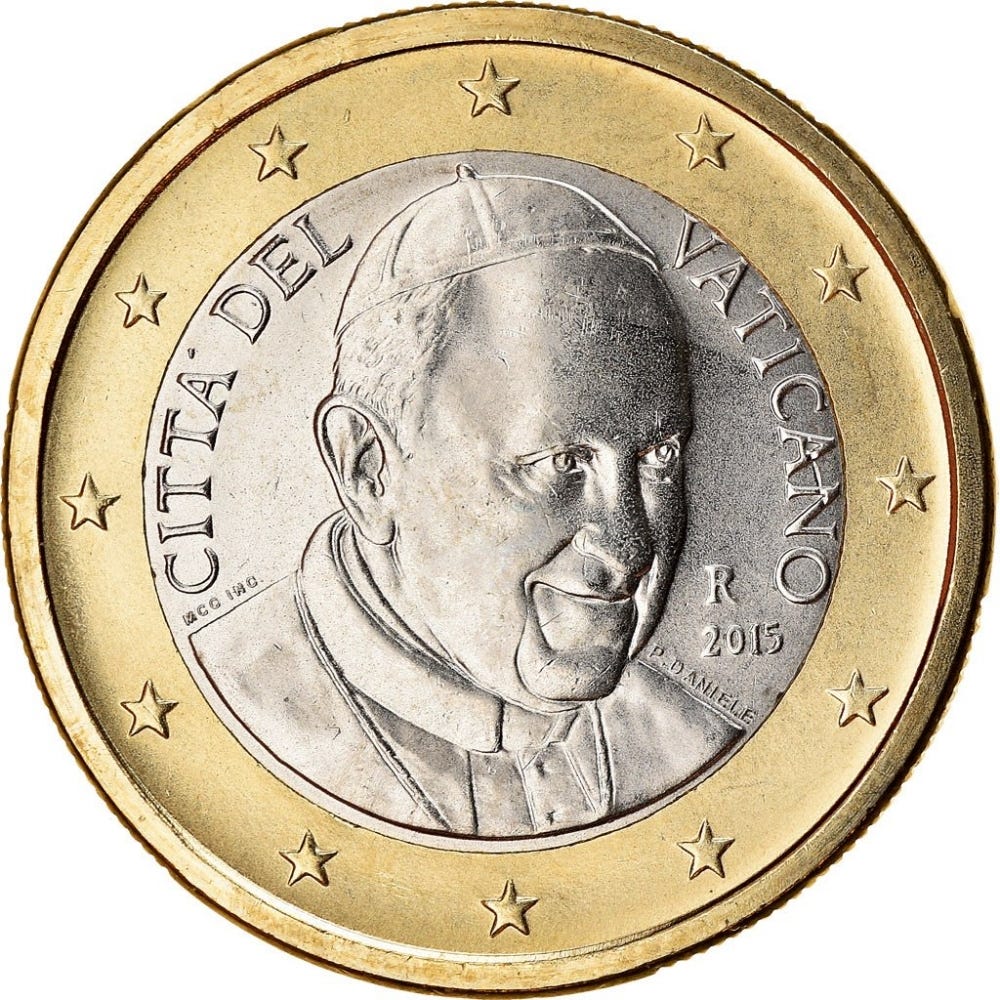
Cash is not the only thing the building has cost the Holy See. Its purchase is at the center of a lengthy and expensive trial now underway in the Vatican City State’s tribunal — someone will have to pay the judges, and for the renovation of a new courtroom. Arguably, l’affaire building cost Angelo Cardinal Becciu the rights and dignities of a cardinal. And the entire scandal has cost the Holy See — and the efforts of Pope Francis — whatever momentum they had begun to gain in the early years of the Francis papacy, in the effort to order, organize, regulate, and manage the financial affairs of the Roman Curia.
The pope has been resolute that the building mess should be dealt with, and that any guilty parties, even members of the College of Cardinals, will have to pay the price. But the energy of the investigation and the trial might have been otherwise spent on something far more proactive, including reforms that might have been long lasting.
Why does any of that matter?
Here’s why: The Roman Curia is not the headquarters of a nation-state, a global NGO, or a multi-national corporation. The Roman Curia is the administrative headquarters of the Mystical Body of Christ, the Church which Christ founded. Behind each case it handles, each issue it address, each responsum or rescript diligently handled in dicastery offices, is a soul, beloved by God, made for eternal intimacy with God, called to freedom from sin, through the grace and ministry of our mother, the Church.
It matters what the finances look like, because the mission of the Church is the most important, beautiful, and powerful mission in human history: the mission of the incarnate Christ, which the Church is graced and commissioned to carry forward.
Transparency, through a glass dimly
The Franciscan Friars of the Renewal, well-known by many as the CFRs, announced last week that they had commissioned an investigation into allegations of serious misconduct in their community, and third-party investigations were satisfied the allegations were not founded. The CFRs said they were announcing that as a measure of transparency, and that likely was indeed their intention.
I don’t say it that way to be critical of the CFRs, but to point to an ambiguity of the moment. Since 2018, there have been calls for transparency, and promises of transparency, and conferences about transparency, but there has not been an especially clear, commonly-held, and practical definition of transparency. That puts ecclesial leaders in a difficult spot.
They know they are supposed to be “transparent,” which seems to mean forthcoming about issues, but they also know that certain things are regarded in canon law and Church praxis as appropriately private. So they have to find a balance.
At times, that balance swings quite far toward the kind of complete openness that makes even due process difficult, and at other times, it seems to swing back, toward announcements about matters that are mostly not known: a kind of transparent window in front of an opaque wall.
Transparency is a weighing exercise, to be sure, but one sometimes talked about as though it were a kind of self-evident virtue. It is not. Still, ecclesiastical leaders have heard, loud and clear, the message that they ought to deliver it. But, ironically, it is not entirely clear for many Church leaders just what transparency actually is.
Without some resolution to this ambiguity, ecclesiastical leaders will continue to feel they must deliver something they do not understand, and lay Catholics will have no measure to understand when it has actually been delivered.
USCCB preview, part 1
The U.S. bishops will meet next week in Baltimore for their first in-person assembly since autumn 2019. The Pillar has registered for our media credentials, made our travel plans, shined our shoes, and gotten some extra masks, as they’ll probably be required for entrance.
We’ll bring you some preview reporting and analysis later this week, including our predictions for the USCCB committee chair and officer elections to be held later this week.
But for now, just to get warmed up, I’ll preview a few of the more business-like parts of the meeting — the day-to-day work that keeps the gears of USCCB processes humming along:
-
The bishops will vote, with probably no discussion, and probably an overwhelming majority in favor, to reauthorize a “Resolution on diocesan financial reporting” which must be renewed every five years.
The document, which is a kind of non-binding moral agreement between the bishops, says that at the end of every fiscal year, each bishop should write to his metropolitan (the nearby archbishop) with the names and bona fides of his finance council members, the dates of finance council meetings, a document saying the finance council followed canon law, and a document signed by finance council members, which say they have seen and discussed the audited financial statements of their diocese.
What’s this all about? Well, effectively, it’s intended as a way to ensure that bishops are actually involving lay experts in the financial administration of their dioceses, instead of engaging in the kind of Potemkin consultation that would be of little actual benefit to the Church. It’s a small measure, and doesn’t actually equate to much “oversight,” but it does annually remind the bishop what he’s supposed to be doing, which, hopefully, encourages him to be vigilant about doing it. If a bishop wants to administer finances inappropriately — like the bishop emeritus of West Virginia, Michael Bransfield, this resolution won’t stop him. But the thought, I gather, is that it might prick his conscience a bit.
And if the finance council think the bishop is out of order, refusing to sign off on their document might trigger some alert to the metropolitan archbishop.
-
The bishops will vote on whether to include the Memorial of St. Teresa of Calcutta in the country’s liturgical calendar as an optional memorial that could be celebrated in the Mass on Mother Teresa’s feast day, September 5.
Basically, that would allow priests to formally include Mother Teresa in the prayers of the Mass celebrated on September 5, in the manner other saints are included in the Mass on their feast days. To be able to do that in the United States, more than two-thirds of the bishops would have to approve it, and the Congregation for Divine Worship and Sacraments at the Vatican would have to give its approval — a process which could probably be resolved ahead of Sept 5 next year.
This will almost certainly be approved overwhelmingly. Because, really, who is going to vote against Mother Teresa? Right?
-
The bishops will vote on the 2022 conference operations budget, which is prepared by the conference committee on finance and budgeting. The 2022 budget does not include an increase in the amount assessed, or charged, to local dioceses to subsidize the operations of the conference.
In November 2020, budget committee chairman Bishop Gregory Parkes explained that the conference’s operating budget is largely dependent on investment income. While market performance means the conference probably did not have to dramatically cut its operating budget for the next fiscal year, it has probably not increased much either — in short, the bishops will probably vote on a relatively flat budget as compared to the current fiscal year. Barring any major surprise, it will almost certainly pass.
The real question will be whether, as the country reopens, the conference will again be looking to increase diocesan assessments in the fiscal years to come.
If you’re interested in learning a whole lot more about how the USCCB gets its money, and where it goes, check out this August report on the subject from The Pillar.
Saint John Who? The basilica’s feast
So, why do we have a feast for a basilica — in this case, the basilica of St. John Lateran, which is the diocesan cathedral of the Diocese of Rome?
Here’s the deal: As you probably know, most Christians lived under persecution in the early centuries of the Church, as many Christians do today. For Christians living in the Roman Empire, that persecution continued, in one form or another, until the conversion of the emperor Constantine in 312, and his toleration, and promotion, of Christianity.
Before Constantine’s conversion, Christians in Rome could not always practice the faith freely, but after he officially tolerated Christianity in 313, that changed. The emperor gave to the pope the Lateran palace, and a basilica on the property was dedicated in 324, by Pope Sylvester I. It became the diocesan see.
The dedication of the basilica was celebrated annually in Rome for centuries because the building represented a new era in the life of the Church — coming out from the catacombs, to worship in the light of freedom and the promise of a new evangelical moment for the Gospel.
The church has been renovated and rebuilt several times, most notably at the conclusion of the Avignon papacies in the fourteenth century, when it fell mostly into ruins. At the conclusion of a major renovation in 1724, the basilica was rededicated as a church by Pope Benedict XIII, and the customary Roman feast of its dedication was extended into the calendar of the universal Church.
There is no “St. John Lateran,” it should be noted. The property, before Constantine got it and gave it to the Church, belonged to the Laterani family. The basilica took on the patronage of both John the Baptist and John the Evangelist, and the names all came together over time.
But if you imagined, as I once did, that there was once a very holy Fr. John Lateran working in Rome, well, you were mistaken.
Here’s the great art historian Liz Lev talking about the basilica, and the triumph of the martyrs:
“Do you wish this basilica to be full of light? God too wishes that your soul be not in darkness, but that the light of good works shine in us, so that he who dwells in the heavens will be glorified. Just as you enter this church building, so God wishes to enter into your soul, for he promised: I shall live in them, I shall walk through their hearts.” — St Caesarius of Arles
Finally, on Friday I’ll be in Louisville, Kentucky, at Immaculata Classical Academy, a Catholic school which has made a name for itself by promoting the inclusion of children with Down syndrome and other disabilities. I’ll be speaking about the prophetic vocation of Christians, including the witness of the special students at a place like Immaculata. If you live in Louisville or nearby, come to the talk, introduce yourself, and we’ll go grab a drink.
Blessed feast. Be assured of our prayers, and please pray for us. We need it.
Yours in Christ,
JD Flynn
editor-in-chief
The Pillar
Join Our Telegram Group : Salvation & Prosperity
